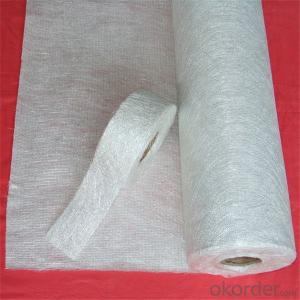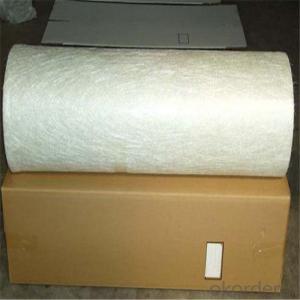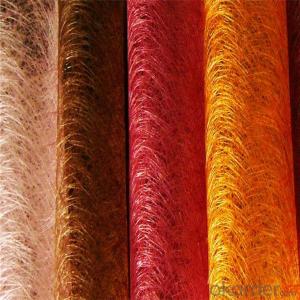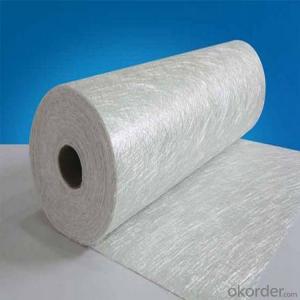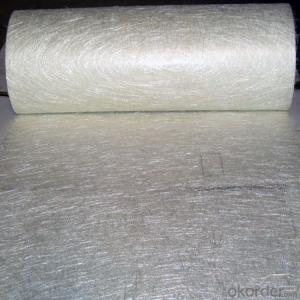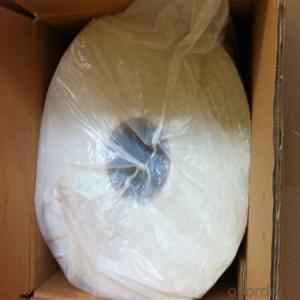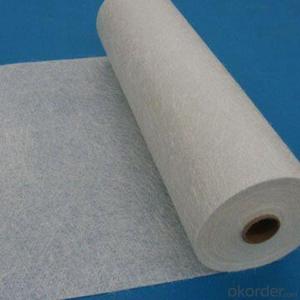150gE-glass Fiberglass Chopped Strand Mat
- Loading Port:
- Tianjin
- Payment Terms:
- TT OR LC
- Min Order Qty:
- 100 m.t.
- Supply Capability:
- 100000 m.t./month
OKorder Service Pledge
OKorder Financial Service
You Might Also Like
Quick Details
| Technique: | Chopped Strand Fiberglass Mat (CSM) | Dimensions: | 225g/m2-900g/m2 | Fiberglass Type: | E-Glass |
| Place of Origin: | China (Mainland) | Brand Name: | cnbm | Model Number: | 300G-900G |
| moisture: | ≤0.2% | combustion content: | 2.1-6.3% | binder type: | emulsion or powder |
| width: | 1040,1270,2080mm |
Packaging & Delivery
| Packaging Details: | plastic bag then carton then pallet |
| Delivery Detail: | 15 days after payment |
Advantage
1. Chopped strand mat is made up from fiberglass chopped strands bonded with powder binder or emulsion binder
2. Wet out faster and easy of handling
3. Good choppability
4.thickness uniformity
Apllication
fiberglass chopped strand mat
It is used for processing and manufacturing FRP products with getting through hand lay up process, filament winding process and press molding. Typical products is including bathroom accessories, pipe, building material, automobile, furniture, vessel, cooling towers and other FRP products
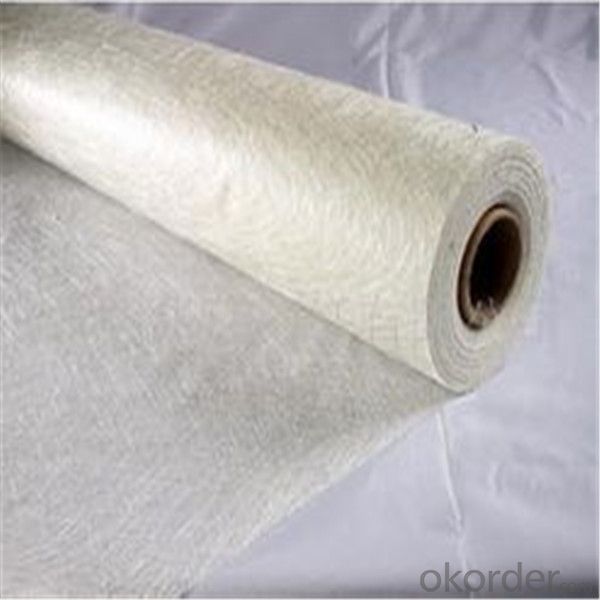

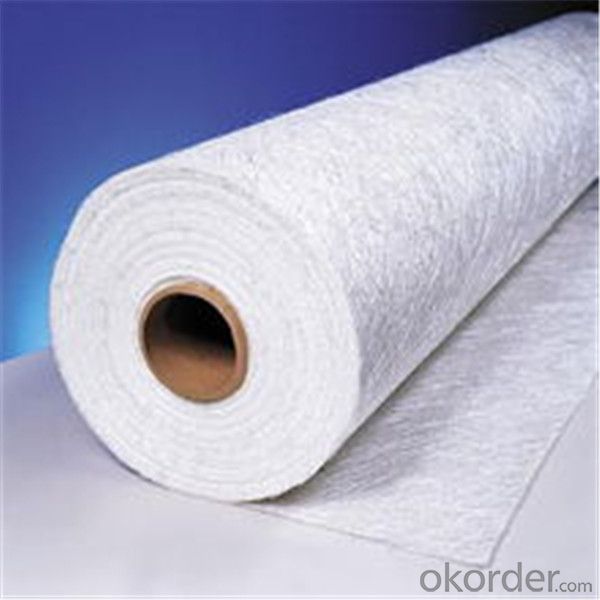
- Q:Can fiberglass chopped strand be used in electrical applications?
- Indeed, it is possible to utilize fiberglass chopped strand in electrical applications. This material is generated by cutting continuous fiberglass strands into shorter lengths, and it serves as a reinforcing substance in diverse applications, such as electrical components. Fiberglass chopped strand boasts remarkable mechanical strength and electrical insulation properties, rendering it suitable for deployment in electrical insulation materials, circuit boards, electrical enclosures, and other electrical components. By enhancing the strength, durability, and electrical performance of these applications, it contributes to their increased reliability and efficiency. Furthermore, when combined with resins, fiberglass chopped strand can yield composite materials with improved electrical properties tailored for specific electrical applications.
- Q:Can fiberglass chopped strand be used in the production of electrical circuit boards?
- No, fiberglass chopped strand is not typically used in the production of electrical circuit boards. Electrical circuit boards are usually made using a layered structure of non-conductive materials such as epoxy resin, copper foil, and fiberglass fabric. While fiberglass may be used as a reinforcement material in some circuit board designs, it is typically in the form of woven fabric or as part of a composite material rather than as chopped strands. The use of chopped strands in circuit board production is more common in other industries, such as automotive or construction.
- Q:Can fiberglass chopped strand be used in sports equipment?
- Yes, fiberglass chopped strand can be used in sports equipment. It is commonly used in the manufacturing of various sports equipment such as skis, snowboards, surfboards, baseball bats, and hockey sticks. The fiberglass reinforcement provides strength, stiffness, and durability to these products, making them suitable for high-performance sports activities.
- Q:Can fiberglass chopped strand be used in marine applications?
- Yes, fiberglass chopped strand can be used in marine applications. Fiberglass chopped strand is a versatile material that offers excellent corrosion resistance, high strength-to-weight ratio, and good impact resistance, making it suitable for use in marine environments. It is commonly used in the construction of boats, kayaks, canoes, and other watercraft. The chopped strands can be mixed with resins to create a strong composite material that can withstand the harsh conditions of the sea, including exposure to saltwater, UV rays, and moisture. Additionally, fiberglass chopped strand is easy to work with, can be molded into various shapes, and provides good dimensional stability. Its durability and resistance to water make it an ideal choice for marine applications.
- Q:What are the moisture resistance properties of fiberglass chopped strand?
- Fiberglass chopped strand has excellent moisture resistance properties. This is due to its composition, which typically includes a combination of glass fibers and a resin matrix. The glass fibers are inherently resistant to moisture, preventing any absorption or degradation of the material. Additionally, the resin matrix used in fiberglass chopped strand is usually water-resistant, providing an extra layer of protection against moisture penetration. This combination of moisture-resistant components makes fiberglass chopped strand highly durable and suitable for various applications in wet or humid environments. It is often used in the construction industry for applications such as roofing, insulation, and water tanks, where exposure to moisture is common. Overall, the moisture resistance properties of fiberglass chopped strand make it a reliable and long-lasting material in environments where moisture can potentially cause damage or degradation.
- Q:What are the typical design considerations when using fiberglass chopped strand composites?
- When utilizing fiberglass chopped strand composites, there are several key factors to take into consideration in the design process. First and foremost, it is essential to assess the mechanical properties of the chopped strand composites. Fiberglass composites are renowned for their excellent strength-to-weight ratio, making them highly desirable for numerous applications. However, the specific mechanical properties, including tensile strength, flexural strength, and impact resistance, will vary depending on the type of glass fibers, resin matrix, and manufacturing technique employed. Therefore, it is vital to fully comprehend the specific requirements of the application and carefully select the appropriate combination of materials and manufacturing methods to achieve the desired mechanical properties. Secondly, one must consider the dimensional stability of fiberglass chopped strand composites. These composites can experience thermal expansion and contraction, leading to dimensional changes in the final product. This can be particularly problematic in applications that necessitate strict tolerances. To address this issue, designers may need to incorporate design elements such as ribs, flanges, and gussets to enhance stiffness and minimize the risk of distortion. Another crucial consideration is the environmental durability of fiberglass chopped strand composites. Although these composites possess inherent resistance to many chemicals and environmental conditions like moisture and UV radiation, they can still experience degradation over time. Exposure to harsh chemicals, extreme temperatures, and prolonged UV exposure can weaken the composite material. As a result, it is crucial to evaluate the expected environmental conditions and select the appropriate resin formulation and protective coatings, if necessary, to ensure long-term durability. Furthermore, one must take into account the manufacturing process and cost considerations. Fiberglass chopped strand composites can be manufactured using various techniques, including hand lay-up, spray-up, filament winding, and pultrusion. Each method has its own advantages and limitations in terms of production rate, complexity of shapes, and cost. Designers must carefully assess the manufacturing requirements and choose the most suitable process that aligns with the desired design specifications and cost constraints. Lastly, it is of utmost importance to consider the safety and health aspects associated with fiberglass chopped strand composites. The handling and processing of fiberglass materials can release fine glass fibers, which can pose a health risk if inhaled. Designers should incorporate appropriate safety measures, such as dust control systems and personal protective equipment, to minimize the risk of exposure to fiberglass particles during manufacturing and product use. In conclusion, when working with fiberglass chopped strand composites, it is crucial to consider factors such as mechanical properties, dimensional stability, environmental durability, manufacturing process, cost, and safety. By carefully evaluating these aspects, designers can ensure that the final product meets the required performance, durability, and safety standards.
- Q:Can fiberglass chopped strand be used in the production of bathroom fixtures?
- Yes, fiberglass chopped strand can be used in the production of bathroom fixtures. Fiberglass chopped strand is a reinforcing material that is typically made from fine glass fibers that are chopped into short lengths. It is commonly used as a reinforcement in various materials and products, including bathroom fixtures. Bathroom fixtures, such as bathtubs, shower trays, sinks, and toilet tanks, often require a strong and durable material that can withstand water, moisture, and regular use. Fiberglass chopped strand is an ideal choice for reinforcing these fixtures due to its excellent strength-to-weight ratio, corrosion resistance, and water resistance. When used in the production of bathroom fixtures, fiberglass chopped strand is typically combined with a resin matrix, such as polyester or acrylic, to create a composite material. This composite material provides the necessary strength and durability to withstand the demands of everyday use in a bathroom environment. Additionally, fiberglass chopped strand can be easily molded into various shapes and sizes, allowing for the production of customized and aesthetically pleasing bathroom fixtures. It can also be easily combined with other materials, such as gelcoats or colorants, to achieve desired surface finishes or colors. Overall, fiberglass chopped strand is a suitable and widely used material in the production of bathroom fixtures due to its strength, durability, water resistance, and versatility in design.
- Q:What are the applications of fiberglass chopped strand?
- The unique physical and mechanical properties of fiberglass chopped strand allow for a wide range of applications. Here are some common uses: 1. Composite materials reinforcement: Fiberglass chopped strand is widely utilized as reinforcement in composite materials like fiberglass-reinforced plastics (FRP). By mixing the strands with resin, a strong and lightweight material is created, which finds extensive use in industries such as automotive, aerospace, construction, and marine. 2. Insulation: Fiberglass chopped strand is commonly employed as insulation material across various applications. Its excellent thermal insulation properties make it suitable for insulating walls, roofs, pipes, and appliances. Additionally, fiberglass insulation provides soundproofing capabilities, making it ideal for noise reduction applications. 3. Filtration and separation: The fine fibers of fiberglass chopped strand find use in filtration and separation processes. They can be manufactured into filter media to remove impurities from air, water, oil, and other fluids. HVAC systems, industrial applications, and even face masks commonly utilize fiberglass filters. 4. Electrical insulation: The high dielectric strength and resistance to electrical conductivity of fiberglass chopped strand make it a popular choice for electrical insulation. It is commonly found in electrical cables, transformers, circuit boards, and other electrical components to prevent electrical current leakage and ensure safety. 5. Concrete reinforcement: Fiberglass chopped strand is also employed as a reinforcement material in concrete structures. It enhances the strength and durability of concrete, making it suitable for applications such as bridges, roads, tunnels, and buildings. Fiberglass-reinforced concrete (FRC) provides improved resistance against cracking, impact, and corrosion. 6. Automotive applications: The automotive industry extensively utilizes fiberglass chopped strand for various purposes. It is commonly used in the production of car bodies, interior panels, bumpers, and other components. The lightweight nature and high strength properties of fiberglass make it an ideal material for improving fuel efficiency and overall performance. These examples highlight the versatility, durability, and cost-effectiveness of fiberglass chopped strand, making it a favored choice across diverse industries and applications.
- Q:How is the moisture resistance of fiberglass chopped strand ensured?
- The moisture resistance of fiberglass chopped strand is ensured through a combination of factors. Firstly, during the manufacturing process, the individual glass fibers are coated with a special resin or sizing that helps to repel moisture. This coating acts as a barrier, preventing water from penetrating the fibers and causing damage. Additionally, fiberglass chopped strand is often used in applications where it is further protected from moisture exposure. For example, it is commonly used as a reinforcement material in composite products, such as fiberglass-reinforced plastics (FRP) or fiber cement boards. These composite materials provide an extra layer of protection against moisture, as the resin matrix or cement matrix used in these products is inherently resistant to water. Furthermore, the mechanical properties of fiberglass, including its high strength-to-weight ratio and dimensional stability, contribute to its moisture resistance. Fiberglass chopped strand is known for its excellent resistance to warping, swelling, or rotting when exposed to moisture or humidity. Overall, the moisture resistance of fiberglass chopped strand is ensured through the combination of its inherent properties, manufacturing processes, and the protective measures taken in the applications where it is used.
- Q:Is fiberglass chopped strand suitable for applications requiring dimensional stability?
- Yes, fiberglass chopped strand is suitable for applications requiring dimensional stability. The random orientation of the chopped strands helps in reinforcing and stabilizing the structure, preventing dimensional changes caused by temperature variations or mechanical stress. Additionally, the high strength-to-weight ratio of fiberglass makes it an ideal choice for maintaining dimensional stability in various applications.
1. Manufacturer Overview |
|
|---|---|
| Location | |
| Year Established | |
| Annual Output Value | |
| Main Markets | |
| Company Certifications | |
2. Manufacturer Certificates |
|
|---|---|
| a) Certification Name | |
| Range | |
| Reference | |
| Validity Period | |
3. Manufacturer Capability |
|
|---|---|
| a)Trade Capacity | |
| Nearest Port | |
| Export Percentage | |
| No.of Employees in Trade Department | |
| Language Spoken: | |
| b)Factory Information | |
| Factory Size: | |
| No. of Production Lines | |
| Contract Manufacturing | |
| Product Price Range | |
Send your message to us
150gE-glass Fiberglass Chopped Strand Mat
- Loading Port:
- Tianjin
- Payment Terms:
- TT OR LC
- Min Order Qty:
- 100 m.t.
- Supply Capability:
- 100000 m.t./month
OKorder Service Pledge
OKorder Financial Service
Similar products
New products
Hot products
Related keywords
